Provide heat to huge areas! Industrial gas boilers for heating, their operating principles
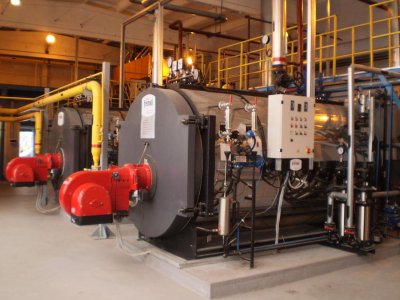
The high demand for domestic and industrial gas boilers is due to their high efficiency, cost effectiveness and safety.
A modern gas boiler is capable of heating a room, heating the coolant and generating steam for industrial needs.
The complex design of the furnace allows to obtain high efficiency with low gas consumption, and thick walls and alloy steel make the device durable.
Content
The structure and operating principle of industrial gas boilers

The operating principle of the heating device is based on the combustion of gas in the furnace with the accompanying heating of the coolant. Based on this feature, boilers are divided into two groups:
- with hot air circulation (fire tube);
- with heating of the liquid almost to the boiling point (water tube).
Steam boilers are installed in enterprises that use steam in industrial production.
Reference. The cost of natural gas and its calorific value have no competitors among other natural combustible materials. Therefore, the use of natural gas provides significant economic benefits.
Gas burner
The main part of any boiler is the burner. According to the type of gas supply, they are divided into:
- on injection, sucking in gas along with the air stream;
- on supercharged, using forced air injection by a powerful fan;
- on diffuse, supplying gas to the combustion site through special diffusion channels.
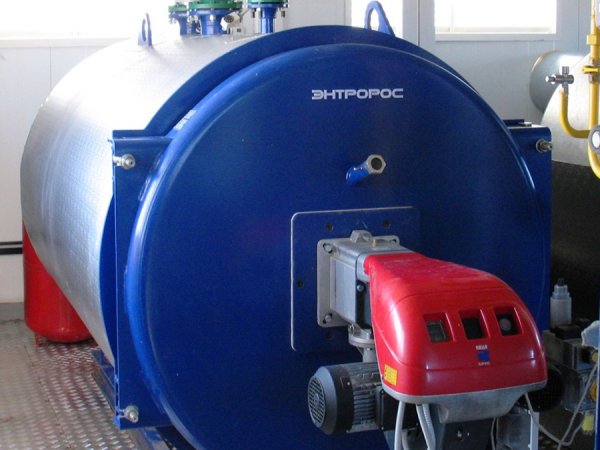
Photo 1. Industrial gas boiler of the Entroros brand. The device has a forced-draft gas burner.
A common burner design is a set of several parallel rod devices that are evenly spaced throughout the entire volume of the firebox. They are equipped with holes for the outlet of the gas-air mixture and provide uniform heating. To increase efficiency, a pipeline with a coolant is placed between the rods. Such installations are capable of achieving Efficiency of 98-99%.
Another popular option for an industrial boiler burner with a capacity of from 100 kW and above has a flare device. A special nozzle is installed on one of the walls of the unit, into which a gas-air mixture is pumped. Flare combustion has proven itself well in two- and three-pass boilers, and is used to obtain a coolant with a temperature 115-120 degrees or a couple.
Firebox
For firing a powerful boiler It is important to withstand high temperatures for a long time. Heat resistance is ensured by using special steels with the addition of manganese, chromium and other alloying components. The walls are reinforced by corrugation and surrounded by a heat-insulating shell.
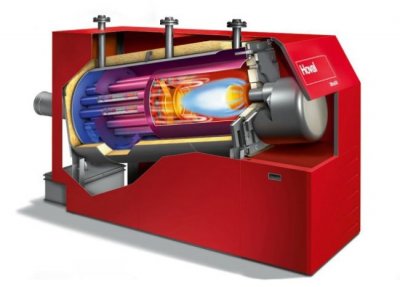
In hot water boilers, they are placed in the firebox one or two heat exchange circuits, through which the coolant circulates.
Steam or high pressure boilers use firewalls and a heat exchanger to produce heat, and steam is produced in the chimney where the flue gas temperature is reduced. up to 600-800 °C.
A separator and a superheater are placed in the combustion chamber of the steam boiler.
An explosion valve ensures operational safety., which is necessarily installed on one (usually the rear) wall of the boiler. The mechanism is triggered in case of excess pressure in the firebox.
Automation and control system
The complexity of industrial boiler control is related to with constantly changing water temperature and pressure, instantaneous gas consumption, air intake for the burner and other factors.
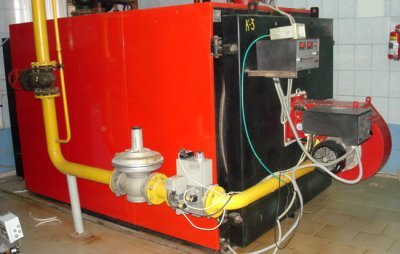
To eliminate the human factor, all control is carried out using special controllers.
The data for their operation comes from temperature, pressure, air and gas flow sensors. For greater reliability, modern boilers have automatic are divided into two parts:
- Fuel supply automation, which is responsible for the operation of the modulating burner and maintaining stable operation of the entire system.
- Safety automation takes into account critical operating conditions of the boiler, the presence of a flame in the firebox, gas supply, heating of the coolant. In case of a malfunction, the boiler is switched off and the fuel supply is stopped. Some boiler models are equipped with self-diagnostic systems.
Attention! Natural gas is commonly used: methane. It is lighter than air and is the optimal fuel. In some cases, it is allowed combustion of propane-butane mixtureThis gas is heavier than air and requires appropriate equipment adjustment.
Types of industrial gas boilers
Industrial gas boilers are divided into several types.
Hot water heaters
Such boilers are distinguished by a symmetrical arrangement of heat exchangers and operate on the multi-pass principle of combustion products movement. They are used to heat the coolant and heat the room. The maximum water pressure in the circulation circuit is 16 bar. The capacity of serial boilers varies from 0.7 to 35 MW. This is enough to heat large workshops and industrial buildings. For hot water supply, a boiler with heating from the chimney is connected to the boiler.
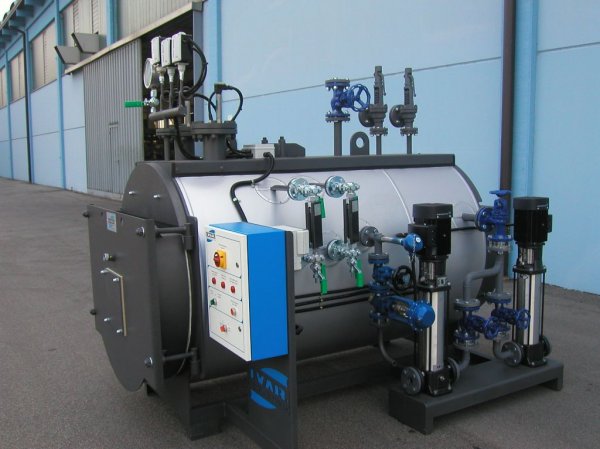
Photo 2. Industrial gas boiler of hot water type. Such devices are used for heating premises.
Steam
The steam boiler is designed to operate with a high temperature coolant. Steam is produced in two stages. The first is heating the water up to 100 degrees and the formation of primary steam, which is passed through a separator for drying. The second stage consists of reheating the now dry steam to the required temperature. After this, the steam is ready for use.
Steam generators perform two tasks at once: heat the coolant for heating buildings and produce steam. To increase the efficiency of such a plant, additional smoke circulation systems are used, which heat the water circulating in the pipes.
Reference. The powerful boiler plant produces up to 1 t of dry steam per hour.
Heat generators of medium and high power
The average power of gas boilers reaches up to 2 MW. This is enough to heat a small production facility or village.
Heating and water supply of individual city districts and large industrial enterprises are provided by high-power hot water boilers (from 2 to 30 MW). Such installations have several heating circuits and are designed for the most efficient use of thermal energy obtained from gas combustion.
Cogeneration
Installations of this type capable of releasing thermal energy sequentially for heating and water supply, and then electrical to provide production or a microdistrict with electricity.
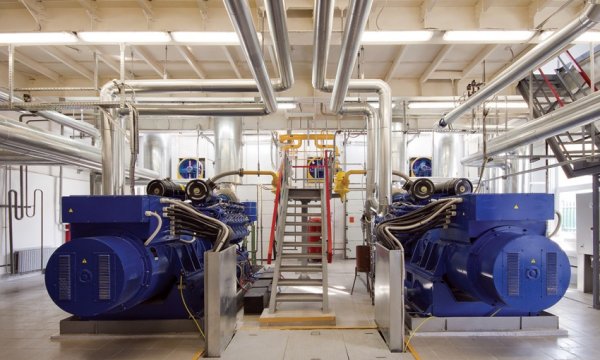
Photo 3. Two cogeneration gas boilers. The equipment is used for heating and hot water supply.
The advantage of cogeneration (production of different types of energy from one fuel) is its high efficiency, which reaches 90%.
It is used to generate electricity gas piston engine, the excess heat from which is used to heat the coolant. The main heating of water occurs in hot water boilers. This technology is used in mini-CHP for work in remote areas.
Safety of operation of boiler equipment on liquefied or natural gas
The threat is the explosion hazard of the gas, so the boiler room has a corresponding hazard class. Commissioning of the device and monitoring of it are carried out by State Supervision Authorities. Developed for industrial boilers Mandatory operating requirements:
- Service 2 times a year.
- Water treatment, filtration and softening are required.
- Equipping the boiler room with gas sensors, fire alarms and primary fire extinguishing equipment.
- All persons authorized to operate the boiler undergo special training.
Useful video
Watch the video, which demonstrates the process of cleaning industrial gas boilers of the hot water type.
Conclusion
Boiler equipment of this class is selected in accordance with specific tasks and operating conditions. The right choice boiler type and power will help you save on its maintenance.








